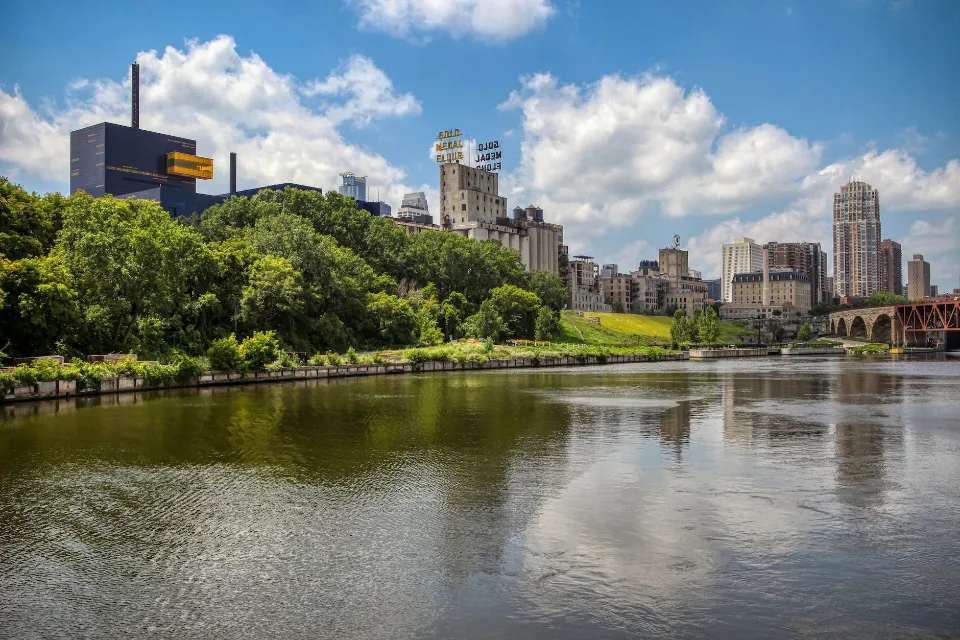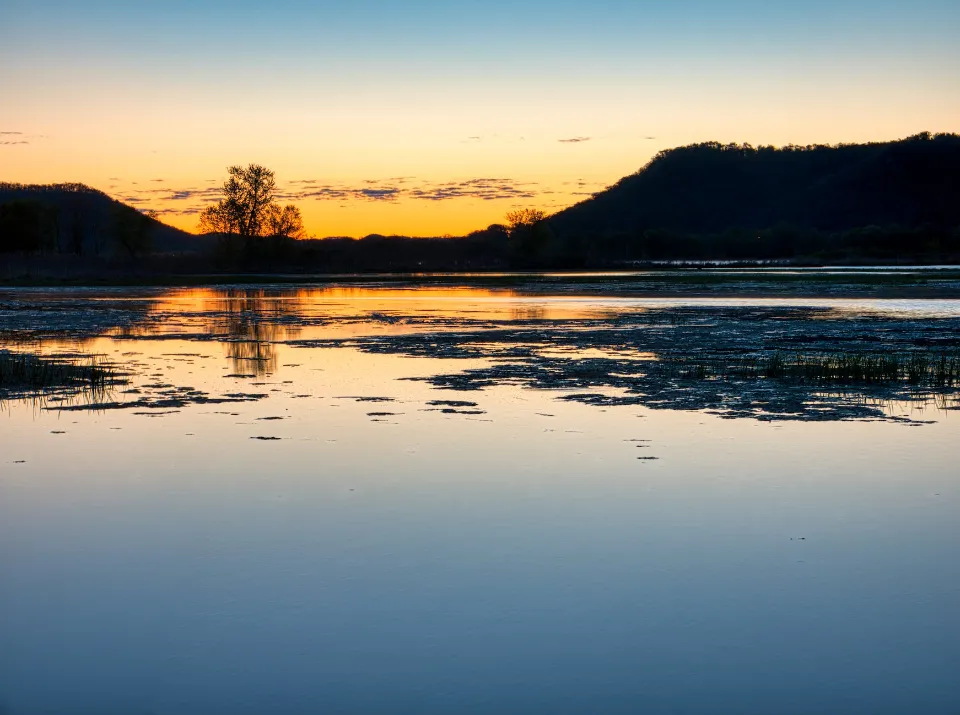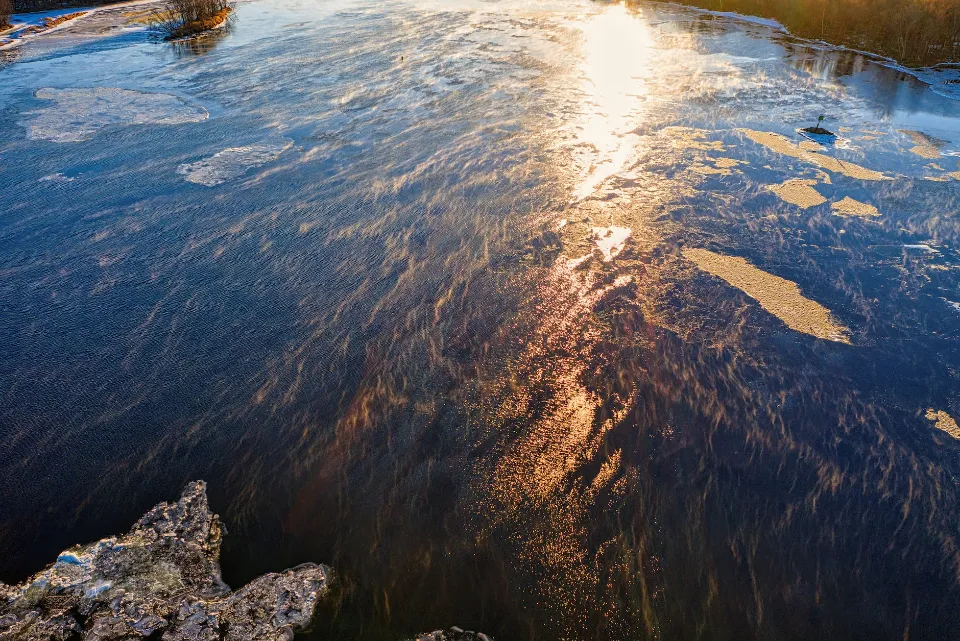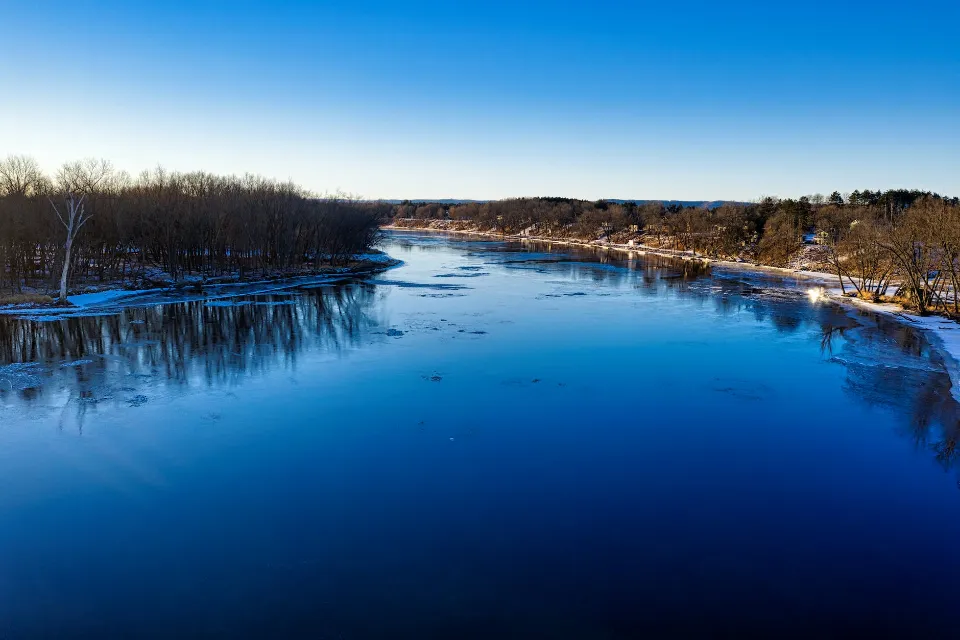Is It Safe to Swim in the Mississippi River – Possible Challenges
The Mississippi River is a dangerous place to be, despite its majestic beauty. It has a reputation for being dangerous for swimmers to survive and is the fourth largest river in the world in terms of drainage area. And each year, people are injured or lose their lives in her waters.
Now that we understand why the Mississippi River is so perilous, let’s look at some safe ways to enjoy this magnificent river.
Is It Safe to Swim in the Mississippi River?
Because of its perilous underwater currents, as well as all the rocks and trees you might run into while swimming here, it is not safe to swim in the Mississippi river.
Because of this, local authorities only advise people to swim in the Mississippi River if they have sufficient swimming experience, are familiar with how to navigate the water, and have someone nearby who can assist them in the event of an accident.
Why the Mississippi River is So Dangerous
The Mississippi River Currents Are Powerful
Approximately 2,350 miles of river make up the Mississippi, according to the Mississippi River and National Recreation Area. Along its long path, the average flow rate or current varies. For instance, this river’s flow rate near New Orleans, which is 600,000 cubic feet per second, is one of its highest. That much powerful water flow could easily kill a swimmer and obliterate a small boat.
This river’s general current poses enough risk on its own to keep people out of the water. Let’s talk about the other ways these currents could result in physical harm or death, just in case you believe wearing a life jacket will keep you safe.
- River currents can slam you into docks, boats, trees, and debris
The Mississippi River could seriously harm a swimmer, kayaker, skier, and others even while they are wearing life jackets. A dock, boat, tree, or any other piece of floating debris could easily slam you as a result of the currents.
The National Park Service claims that when a swift current encounters an object, the water is forced up and over it. Therefore, even if you are fortunate enough to run into something like a tree that could break your fall, the current will quickly sweep you away before you have a chance to grab onto it. Serious injuries like concussions, lacerations, bruises, and broken bones could result from the collision.
These swiftly moving rivers’ ability to easily sweep small craft, such as kayaks and canoes, away is one of their most hazardous features. It is therefore advised that novice boaters avoid the Mississippi River.
- It’s easy to get caught in an undertow
When the water near the shoreline flows back out to sea, this is known as an undertow. Even on calm days, this spiraling motion is still possible. Undertows can quickly drag a swimmer out to sea and make it challenging to swim back to shore, making them extremely dangerous.

When friction at the river’s bottom causes currents to slow down, undertows happen. In spite of this, the water’s surface current is still moving quickly. At the intersection of the two currents, the water then turns in a corkscrew pattern. In a large river like the Mississippi, the water’s spiraling motion is extreme. It is therefore challenging to survive when caught in an undertow.
The National Oceanic and Atmospheric Administration (NOAA) advises that the safest course of action if you find yourself in an undertow is to unwind and float. Avoid attempting to swim against the undertow as this will only make you more exhausted. Instead, swim at an angle away from the shoreline until the undertow stops carrying you, then swim back to land.
Eddies may also drag you below the water’s surface. The main current of the river collides with an object to create an eddy, which is a circling current of water. Once the object is in the water, a circle forms around it. Eddies can range in width from a few feet to miles.
It can quickly pull you under and entrap you underwater if you get caught in an eddy. The National Park Service asserts that swimming across an eddy as opposed to with it is the best course of action for escaping one.
You should always be aware of your surroundings and exercise caution when swimming in any body of water because undertows and eddies can happen even on calm days.
Water Levels Are Five Times Higher in the Spring
Just wait until spring if you thought the summertime currents in the Mississippi River were hazardous. That’s because during this time of year, heavy rains and snowmelt cause this river’s water level to rise significantly.
The Mississippi River’s water level can increase by up to five times during the spring. The currents are more powerful and hazardous because of the higher water level. Additionally, it indicates that flooding is now more likely.
Mississippi River Floods Are Deadly
Snowpack melt and intense rains can cause sudden flooding in the Mississippi River. Anyone who lives close to a river may find themselves in a dangerous situation during a flood because of how easily people, cars, and even buildings can be swept away by the swiftly moving water.
The most frequent natural disaster in the US, according to the National Weather Service, is flooding. Every year, river floods happen, and the number increases in the spring. According to National Weather Service records, the Mississippi River floods on average every three years or so. However, these figures are constantly changing as a result of yearly weather changes.
Notable Flood Deaths and Damages
At least 24 people died and over $15 billion in damage were incurred as a result of the severe flooding on the Mississippi River in June 2008. Flooding in some areas of Eastern Iowa lasted more than ten days as a result of the flood, which was primarily caused by heavy rainfall in Iowa and Wisconsin.
A more recent severe flood struck the Mississippi River in January and February of 2016. This time, the flood caused at least 20 fatalities and was caused by the strongest El Nino ever recorded at the time.
And from December 2018 to August 2019, the lower Mississippi experienced its longest flood ever. At least 12 people died as a result of this record-breaking flood, which also cost over $20 billion in damages. This flooding lasted for an astoundingly long time as a result of numerous weather-related incidents in numerous tributary basins.
Some Animals Living in the River Are Dangerous
The Mississippi River is home to some dangerous animals in addition to currents and undertows. Alligators, snakes, and snapping turtles are a few of these. Even a bull shark or two might be encountered.
In the Mississippi River, alligator sightings are frequent. They frequently remain close to the water’s edge and are easily disguised. One estimate places the total number of alligators in this extremely long river at around 30,000. The more swampy areas are where alligators reside.
In the river, snake sightings are also frequent. One of the deadliest poisonous snakes found in or around these waters is the timber rattlesnake. The water moccasin, copperhead, eastern diamondback rattlesnake, coral snake, and pygmy rattlesnake are some of the other dangerous snakes that inhabit the Mississippi.
Normally, turtles aren’t harmful creatures, but the snapping turtle is an exception. This river is home to a species of turtle that can reach lengths of more than two feet. They can inflict serious harm with their strong jaws and aggressive nature. The biggest turtles ever seen in these waters are alligator snapping turtles.
Bull sharks are the very last but not least. Although they can live in freshwater as well, this type of shark prefers saltwater. Bull shark sightings have been reported all the way up in Illinois along the Mississippi River.
The Mississippi River is Polluted
One of the most polluted rivers in the country is the Mississippi River. Industrial facilities, sewage treatment facilities, and agricultural runoff are just a few of the sources of this pollution.
Any water that drains from agricultural land is considered agricultural runoff. Chemicals that could be harmful to the environment, including pesticides and herbicides, could be present in this water.
Another significant source of Mississippi River pollution comes from sewage treatment facilities. Before discharging human waste into the river, these facilities treat it. Even so, some untreated sewage makes it into the water.
Added to other major sources of pollution for this river are industrial facilities. Heavy metals and toxic chemicals are among the pollutants released by these facilities. Toxic chemical exposure can cause troubling symptoms or chronic illness, even if you don’t immediately feel the effects of the chemicals.
The Mississippi River is one of the most polluted rivers in the United States as a result of all these factors.
Five Ways to Stay Safe at the Mississippi River
While swimming in the Mississippi River, there are several key safety precautions to take. Consider these five safety measures.
- Avoid swimming close to sewage treatment facilities or industrial facilities. Compared to other parts of the river, these areas are more likely to have pollution. They might also have more debris, such as tires and other discarded items, and eddies along the bank.
- In the springtime when there are floods and when it is very rainy, stay out of the river. Because runoff from farms and other areas can introduce pollutants into rivers, taking this precaution is crucial. You run the risk of being swept away in strong currents or a flood during spring runoff from snowpacks, as well as during intense rains and rainstorms.
- When alone, avoid going close to or into the water near rivers. Do not go alone; go in groups. Assume you are in a group of knowledgeable individuals who are ready for the risks associated with the river. In that case, a number of people could offer assistance in an emergency. Keep in mind that entering the Mississippi River in a small boat or for swimming is not advised.
- If you notice any aquatic animals, be cautious and be aware of your surroundings. Bull sharks, snapping turtles, alligators, and snakes could be nearby. Most of the time, these animals won’t attack unless they feel threatened, but if you unintentionally agitate one, it might attack in self-defense.
- Allow skilled professionals to look after you while you enjoy river activities. Enjoy a river boat cruise driven by licensed captains who are familiar with the river instead of swimming or kayaking in it. Always keep at least 10 feet between you and the bank while hiking and camping near the river.
There are numerous ways to take pleasure in activities on or near the water without taking significant risks to your safety.
Can You Practice Water Sports in the Mississippi River?
Yes, you can still engage in a variety of water sports on the Mississippi River and have access to all the necessary resources, such as essential gear, fantastic swimming areas, and qualified assistance.
Additionally, even if you have no prior experience, you can hire professionals who can give you a short lesson in these water sports and help you improve your performance.
Best Places to Swim in the Mississippi River
The Mississippi River offers many fantastic locations for swimming and having fun with your family or friends, including waterfalls, lakes, water parks, and other swimming areas.
All you have to do is decide which time of year you’re traveling and the best swimming location along the Mississippi River that satisfies your budgetary, entertainment, and logistical needs.
Waterfalls in the Mississippi River
If you’re looking for a relaxing outdoor swimming experience and want to connect with the local wildlife, the waterfalls in the Mississippi River are ideal.
When traveling to the Mississippi River and wanting to have a great time, these are the top waterfalls you should see.
- Cooper Falls
- Seminary Falls
- Dunns Falls
- Owens Creek Falls
- Rocky Falls
- Clark Creek Falls
Lakes in the Mississippi River

There are numerous public lakes along the Mississippi River that are excellent for swimming all day, participating in water sports, and taking boat tours to view the breathtaking scenery.
For the convenience of their visitors, these lakes also offer camping spaces and other useful amenities. You can swim in the Mississippi River and at these top lakes.
- Grenada Lake
- Sardis Lake
- Aberdeen Lake
- Choctaw Lake
- Clear Springs Lake
Water Parks in the Mississippi River
If you’re looking for a safe environment to go swimming with your friends and need all the entertainment you could possibly want in one location, the water parks along the Mississippi River are a fantastic choice.
These water parks give you access to a wide variety of games, attractions, and water activities for all ages, including kids, adults, and seniors.
Here are the top water parks you can visit to have fun while traveling along the Mississippi River.
- Grand Paradise Water Park
- Gulf Islands Water Park
- Geyser Falls Water Park
- Yogi on the Lake Water Park
- Merit Water Park
Fishing in the Mississippi River
With 260 different fish species to catch and being accessible to anyone who wants to engage in this sport, the Mississippi River is a fantastic fishing location for both local anglers and anglers from all over the nation.
The best part is that, whether you are an experienced fisherman or a complete novice, you can go fishing almost anywhere in the Mississippi River and have a great day catching fish.
Kayaking & Canoeing in the Mississippi River
With or without experience, people can also paddle down the Mississippi River in canoes and kayaks, exploring all the well-known locations along the way.
This is fantastic for anyone who wants to get a close-up view of the Mississippi River, go on an exciting outdoor adventure, and take in the area’s breathtaking scenery.
How Big is the Mississippi River?
Depending on where you are along the river, the Mississippi River’s length is 2,350 miles, and its width ranges from 30 feet to 11 miles.
Because it starts at Lake Itasca and travels across the nation before coming to an end at the Gulf of Mexico, the Mississippi River is now the second-longest river in the United States.
Its size allows it to hold 25% of all fish in the nation, including 260 different species, and it aids farmers in the production of 92% of all agricultural goods in the US.
Is There Any Pollution Or Contamination in the Mississippi River?
Yes, over the past few years, a variety of people have contributed to the pollution of the Mississippi River, including local farmers through agricultural runoff, businesses that dump industrial waste, individuals who throw plastic waste into the water, and more.
Due to this circumstance, the Mississippi River rose to the second-most polluted river in the country in 2012; however, this is no longer the case.
The Mississippi River’s contamination levels are declining annually as a result of the local government and various environmental initiatives like UNEP, which aim to make its waters completely safe for human consumption.

Are There Any Accidents Or Casualties on the Mississippi River?
Yes, there have been incidents in which people have perished in the Mississippi River over the past few years. In some cases, they drowned after attempting to swim across the River and in others, they have been unintentionally dragged by the current.
Accidents are also brought on by people falling into the water from boats or bridges and being carried away by the powerful currents until they are unable to swim any longer. You should therefore refrain from swimming in the Mississippi River and limit your swimming to nearby, secure areas.
Other Activities You Can Enjoy in the Mississippi River
In addition to swimming, the Mississippi River offers a variety of other activities that can add excitement and entertainment to your trip.
Consider that you want your trip to include some adventure. If so, a tour guide can show you the way and assist you in avoiding any hazardous areas while you go hiking, hunting, or observe the wildlife near the Mississippi River.
Additionally, you can go camping with friends, engage in a geocaching competition, and engage in agritourism on various farms.
Conclusion
One of the most famous rivers in the country is the Mississippi. But regrettably, it’s also one of the riskiest. Your safety and the safety of others depend on you treating this swift river’s power and risks with respect.
The river is dangerous due to a variety of factors, including currents, floods, wildlife, and pollution. And because people don’t recognize the risks or plan for emergencies, there are far too many accidents and drownings each year.
It’s important to educate yourself about the risks and take safety measures before visiting the Mississippi River.
